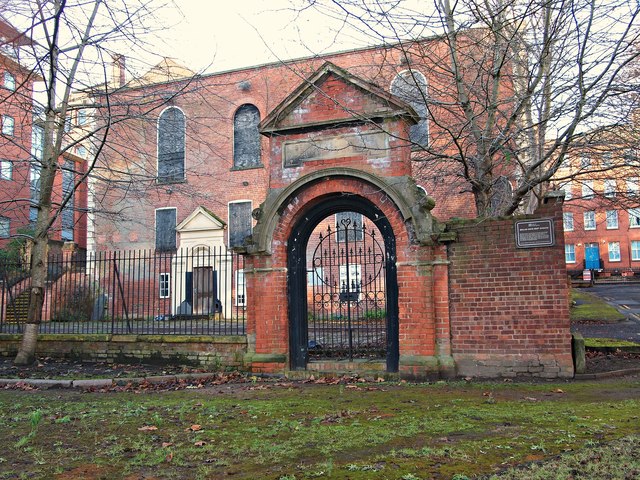Duke's Place, Hockley, Nottingham 1
Introduction
The photograph on this page of Duke's Place, Hockley, Nottingham 1 by David Hallam-Jones as part of the Geograph project.
The Geograph project started in 2005 with the aim of publishing, organising and preserving representative images for every square kilometre of Great Britain, Ireland and the Isle of Man.
There are currently over 7.5m images from over 14,400 individuals and you can help contribute to the project by visiting https://www.geograph.org.uk

Image: © David Hallam-Jones Taken: 2 Jan 2017
An information plaque on the corner of this building's east-facing boundary wall describes the existence of a former burial ground on this site known as The Bellar Rest Garden. It seems likely that this burial site was part of the nearby Barker Gate Burial Ground behind this building. After ceasing to be used for this purpose it became a rest garden and later (date unknown). More recently, perhaps for the past 10 years or so, it has become a car park without very much attention to the fact that it was the last resting place of the bones of a good number of local people. A few ancient gravestones can still be seen gravestones around the edges of the site. The history of the burial ground is traceable back to 1742 when a plot of land on Barker Gate was acquired from the Duke of Kingston for the sum of ten shillings. In the 1830s these burial grounds were used to accommodate the remains of the victims of a cholera epidemic in Nottingham in which 330 people. In 1883 authorisation was granted to take down two of the burial ground walls to allow for an extension of St Mary’s School. The building in which the school was housed was originally a Baptist chapel that was redesigned and converted into this school in 1886 by the well known local architect Thomas Chambers Hine. This side of the building appears to be empty at present, although other parts of the old school appear to be in use as offices. A faded sandstone plaque above the gate reads "St Mary's School, 18 ..(?), Boys' Entrance". The A60 lies a stone's throw away behind the photographer.

